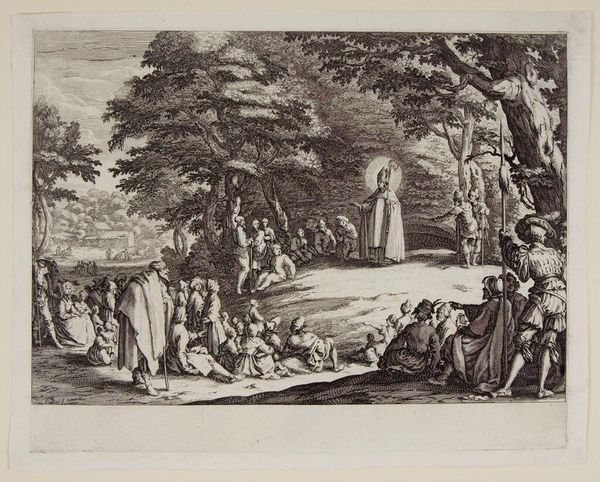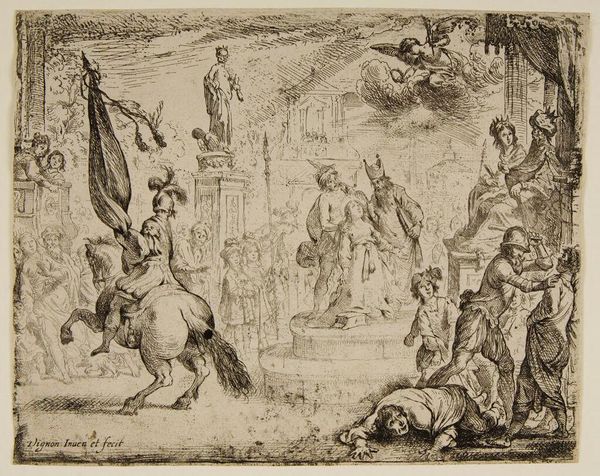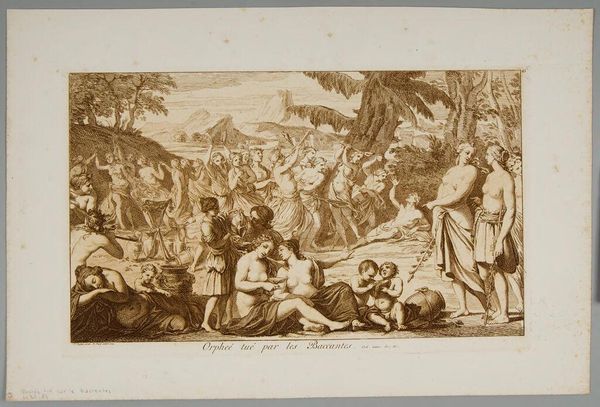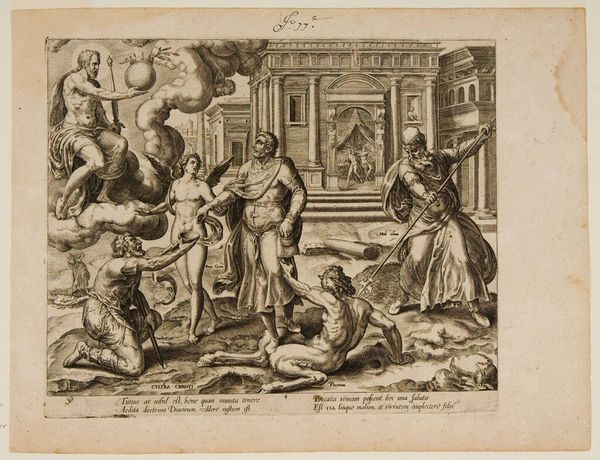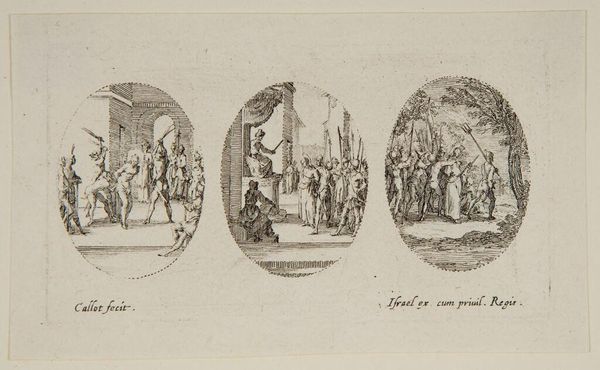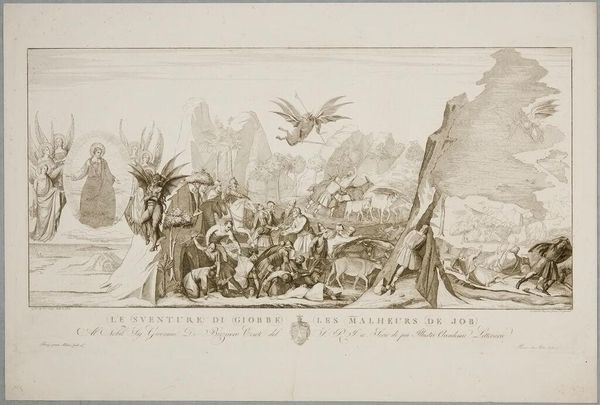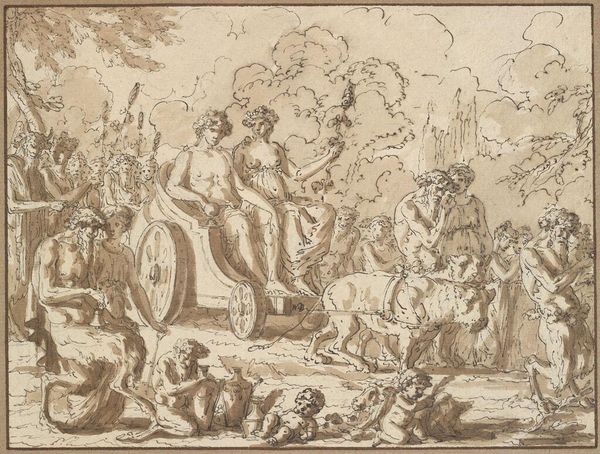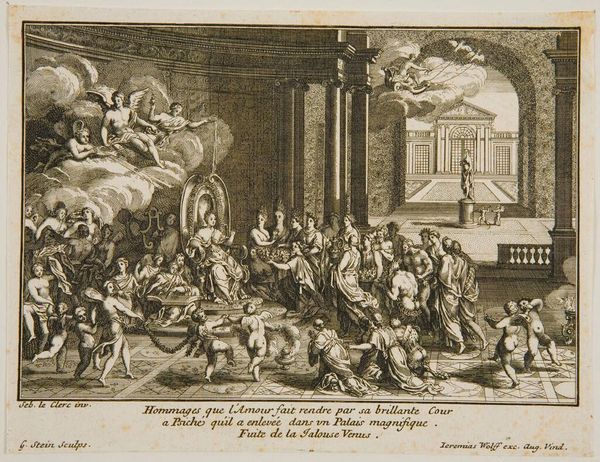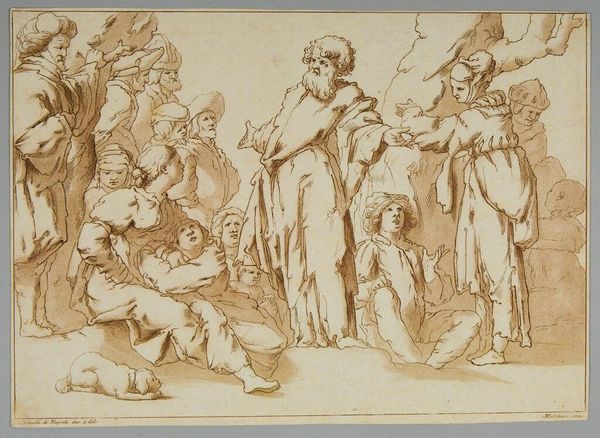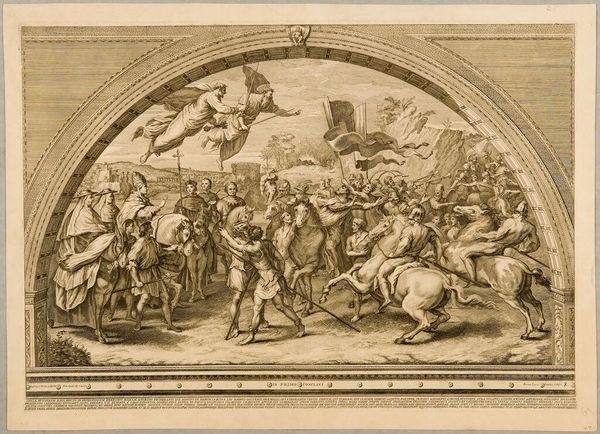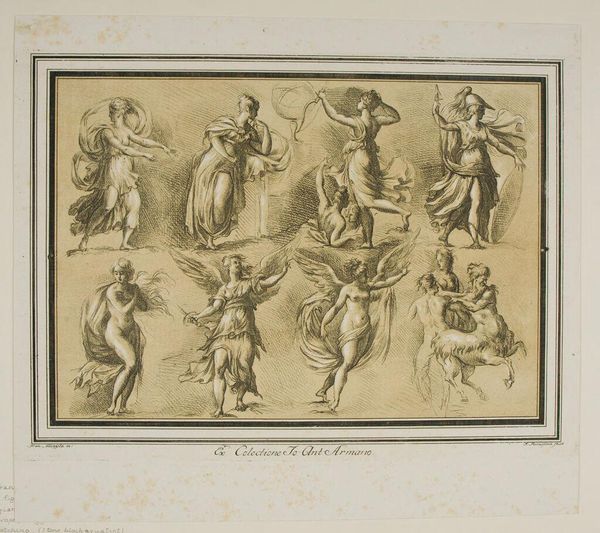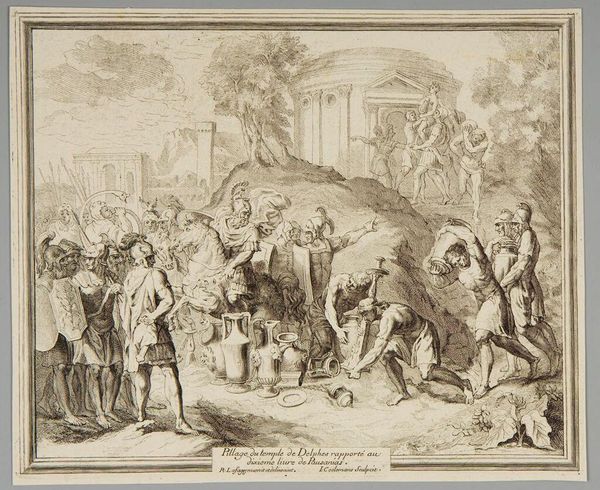
Copyright: CC0 1.0
Editor: This is Johann Ulrich Kraus's "Frieze," created around 1700. It's monochrome, and divided into two registers showing different scenes of figures and animals. The composition feels very dynamic and busy. What draws your eye in this work? Curator: The division into registers is crucial. Note how the upper register's frenetic energy, achieved through dynamic figure poses and implied diagonals, contrasts sharply with the lower register's more processional, almost stately, arrangement. Do you perceive how the artist uses line to define form and create movement? Editor: Yes, I see the difference. The lines are much more agitated in the top section. Curator: Precisely. And it’s through this very interplay of line, form, and composition that Kraus constructs meaning. By analyzing these formal elements, we unlock the work’s intrinsic visual language. Editor: That’s so helpful. I'm starting to see how much the composition itself tells the story. Curator: Indeed. Focusing on the inherent qualities allows one to decode how Kraus organizes the relationship of space and figures, thereby revealing its complexity.
Comments
No comments
Be the first to comment and join the conversation on the ultimate creative platform.

